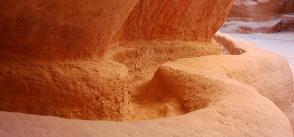
Jordan seeks to become an oasis of water-saving technology
As strains on the desert nation’s supply increase, scientists collaborate on projects to keep water flowing.
For centuries, the land now called Jordan has been one of the world’s driest places. Today, the nation’s water supply is more constrained than ever: wells are running dry, groundwater is increasingly polluted and precious water leaks from old pipes. Waves of refugees are stretching resources even thinner: Jordan’s population has swelled from 5.9 million in 2006 to 9.5 million in 2016.
The average amount of water available annually per person is less than 150 cubic metres — one-sixtieth the amount that is available to a person in the United States. Researchers, who expect the situation to worsen as temperatures rise and precipitation levels drop with climate change, are coming to Jordan to collaborate on water-technology research and development.
Samer Talozi, a water expert at the Jordan University of Science and Technology in Irbid, says that the country has become an international test bed because of the environmental, structural and social challenges to its water supply. “If we can build systems that work in Jordan,” he says, “they will work everywhere.”
But not all technologies evolving in Jordan are new. In August, Hassan Fahad al-Rhaibeh, the mayor of the Jordanian town of Umm el-Jimal, was re-elected after pledging to restore reservoirs built by Arabs as early as ad 90. Winter rains and run-off from mountains in Syria — 10 kilometres to the north — once streamed through canals and into basalt-block reservoirs, which stored the water throughout parched summers. People maintained the system for 800 years, through the Roman, Byzantine and Islamic eras, until the town was abandoned around ad 900. Today, those living around the ruins rely almost entirely on deep wells drilled after 1990. They complain that the well water smells and tastes salty.
Read the full article by Amy Maxmen via Nature.
[Photo by Derek | Flickr]







